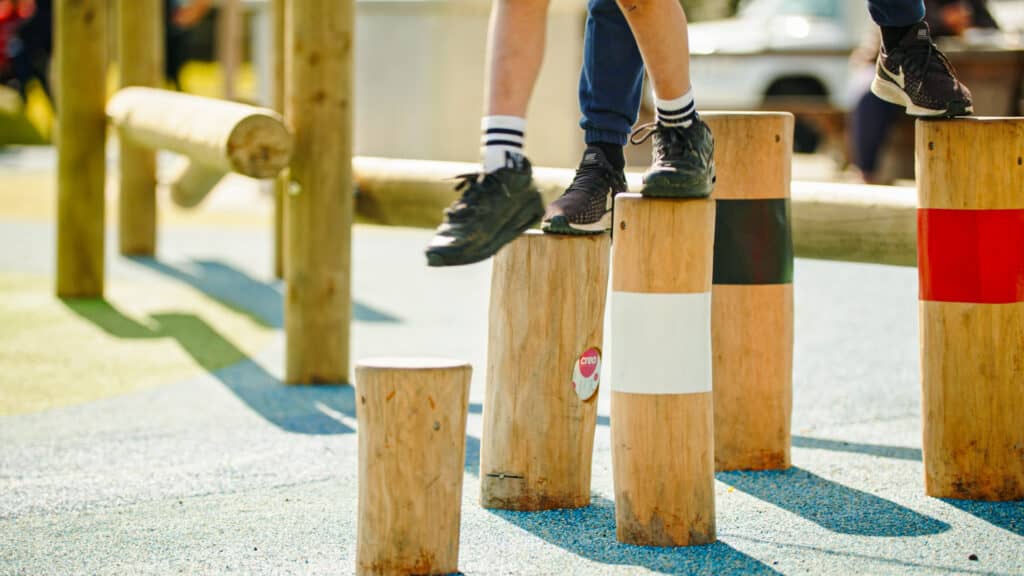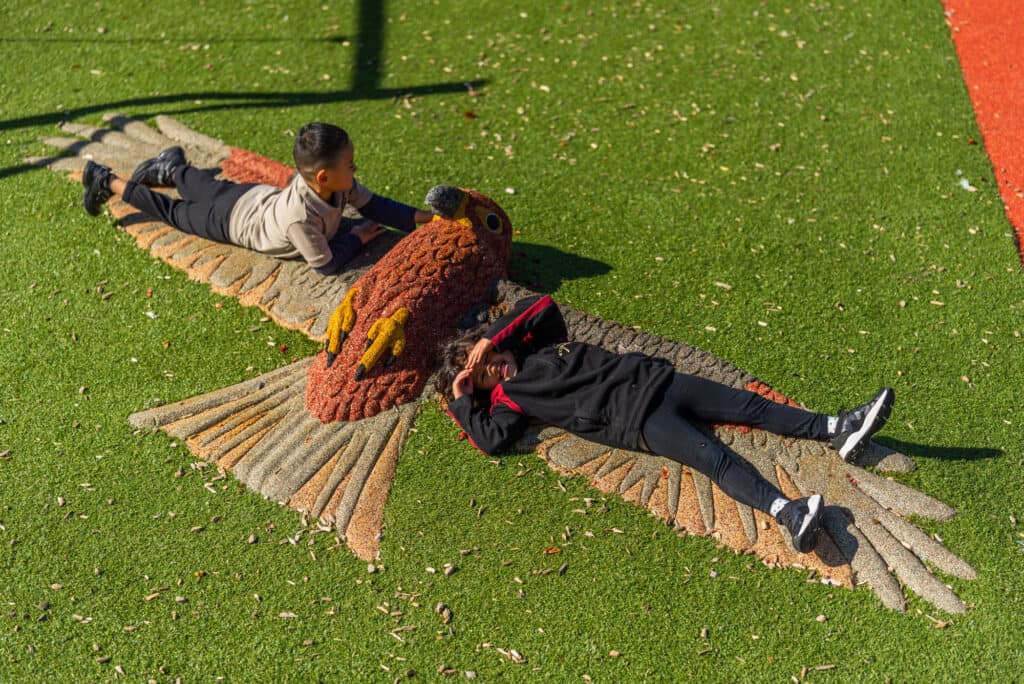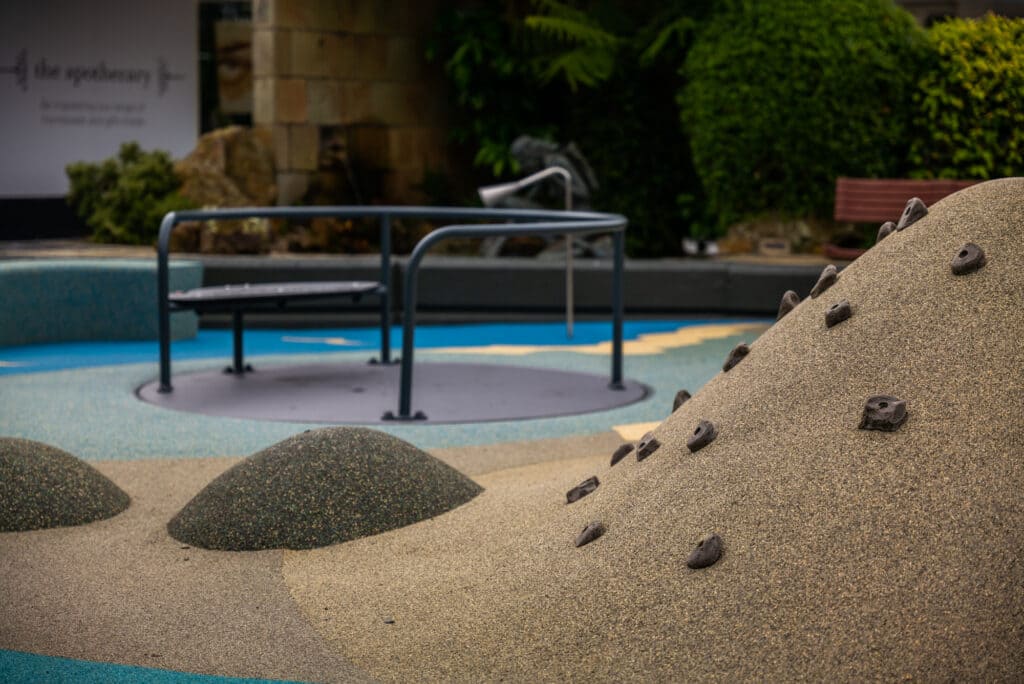If you are looking to build a new playground, you might be struggling to organise or add equipment or design features to your plan. However, sometimes less is more, and in this blog post, we will cover all you need to know about designing a space with fewer features but great play value.
The Essence of Traditional Playground Design
Classic Features and Their Limitations
Traditional playgrounds, familiar to many, typically feature slides, swings, and climbing structures. These elements have been playground staples for generations, offering classic fun and physical activity. However, the effectiveness of these elements is not just about quantity. More equipment doesn’t always equate to more play value.
In fact, in specific environments, these standard features might not be the best fit. Overcrowding a playground with too many structures can actually steer away from the quality of play, leading to a cluttered and less engaging space.

Broadening the Playground Horizon
Playground design is an imagination-rich space with a range of philosophies that go beyond traditional layouts. For instance, natural playgrounds incorporate rocks, water, and landscaping to create a play environment that harmonises with nature.
On the other hand, inclusive playgrounds are meticulously designed to be accessible and enjoyable for children of all abilities, including those with physical or sensory challenges.
Unique Designs and Their Impact
Let’s consider some innovative playground designs:
- Adventure playgrounds, which foster unstructured play using materials like tires, wood, and ropes, encourage creativity and problem-solving. They are challenging, in essence, helping users grow different skill sets.
- Sensory gardens, designed to stimulate the senses with features like scented plants and tactile surfaces, offer a unique play experience that engages different sensory pathways.
Each type of playground design has its own advantages and challenges.
Natural playgrounds, for example, can foster a deeper connection with the environment but may require more maintenance. Inclusive playgrounds, while promoting accessibility, might involve higher initial costs.

Embracing "Simplicity": When Less is Ideal
Tailoring Design to Space and Community Needs
In certain areas, a “simpler” playground design is more appropriate and effective. A minimalist approach can greatly benefit small spaces or communities with specific needs.
A less cluttered playground can enhance creativity and foster better social interaction among children. It’s not just about the number of play structures but about creating a space that encourages imagination and free play.
The surrounding environment plays a crucial role in playground design, and a well-integrated space can significantly improve the play experience.
Intentional Design: Quality Over Quantity
Maximising Potential with Fewer Elements
The key to a successful minimalist playground is the focus on quality over quantity.
This approach involves selecting fewer elements but ensuring that each one is of high quality and serves a specific purpose.
Strategies for maximising playground potential with minimal elements include choosing versatile equipment that can be used in many ways, focusing on natural elements that provide a range of play experiences, and incorporating open spaces that allow for free play and imagination.
A few examples are working with your landscape to create different play patterns and encouraging exploration. Choose equipment that has more than one type of play feature in it.
The secret of a great design is creating a story, ensuring that your playspace resonates with what you and the community need. In that way, your space won’t be cluttered and will cater specifically to your user demographic.

The Value of Thoughtful Design
In conclusion, adopting a ‘less is more’ philosophy in playground design is about more than just a trend. It’s a commitment to creating spaces that foster imagination, inclusivity, and community engagement.
Do you want to know more on how you can have a space that will fit your needs? Call us on 0800 000 334 or send us an email to [email protected]
